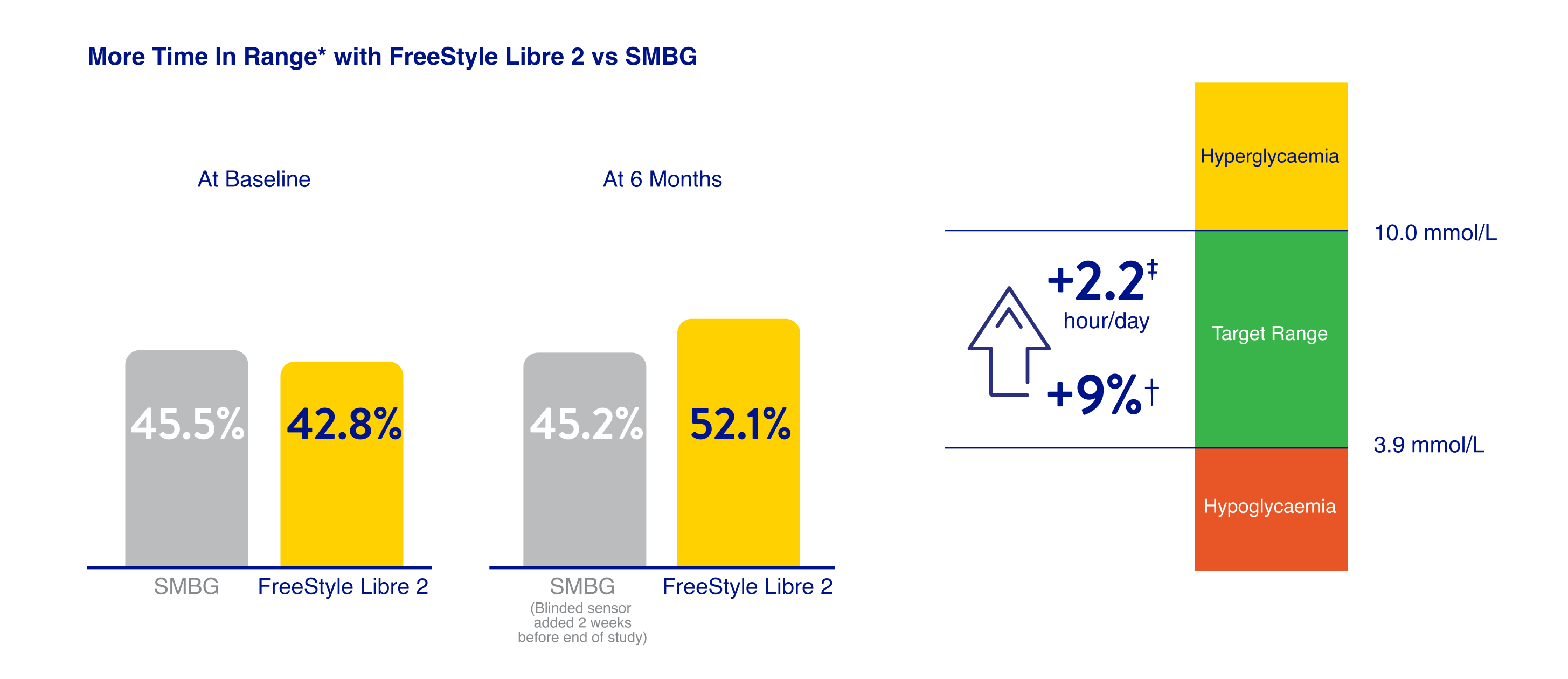References & Disclaimers
Images are for illustrative purposes only. Not real patient data.
** A comprehensive list of criteria can be found in the supplement of the publication.1
§ FreeStyle Libre Pro, no longer for sale in EU & UK.
1. Leelarathna L, Evans ML, Neupane S, et al. Intermittently scanned continuous glucose monitoring for Type 1 diabetes. N Engl J Med. 2022;387(16):1477-1487. doi:10.1056/NEJMoa2205650
2. Battelino T, Danne T, Bergenstal RM, et al. Clinical targets for continuous glucose monitoring data interpretation: Recommendations from the International Consensus on Time in Range. Diabetes Care. 2019;42(8):1593-1603. doi:10.2337/dci19-0028
3. Beck RW, Riddlesworth T, Ruedy K, et al. Effect of continuous glucose monitoring on glycemic control in adults with Type 1 diabetes using insulin injections: The DIAMOND randomized clinical trial. JAMA. 2017;317(4):371-378. doi:10.1001/jama.2016.19975
4. Lind M, Polonsky W, Hirsch IB, et al. Continuous glucose monitoring vs conventional therapy for glycemic control in adults with Type 1 diabetes treated with multiple daily insulin injections: The GOLD randomized clinical trial. JAMA. 2017;317(4):379-387. doi:10.1001/jama.2016.19976
.svg)


